My Year of Korean Cooking
'Local man discovers basic organizational tools' & other meditations for serial hobbyists
For better or worse, being a serial hobbyist is a pretty fundamental part of my identity. I’ve had “jack of all trades, master of none” energy for as long as I can remember — presumably reinforced by what I chose to study, and what I chose to do for work. The modern designer needs to wear many a hat, in whatever euphemism you want to use to describe the current corporate hellscape.
My cynical, and by now perhaps outdated, take is that many young designers enter the field with ambitions of creative expression, of making things to bring about a slightly brighter and more humane world… only to be hit hard by the blunt reality that the primary thing people who might employ you (or people in general, honestly) are interested in making is money, or its more sophisticated cousin, shareholder value.
So the natural next step is to take matters into your own hands and channel that energy into something else, a personal project — PersProj as I like to call them — “creative” or otherwise, a release valve for that pent-up desire to bring something real into this world. Who amongst us does not have a folder of half cooked business ideas, logos for never started companies, websites that haven’t been published, the first three pages of the next great American novel, a full set of crochet hooks, empty Instagram accounts, canvases unpainted, pristine cookbooks, candle making equipment, a sewing machine that has never been turned on, the start of a sweater on some too expensive knitting needles stashed away somewhere, basket weaving reeds — the trail of dead projects I’ve left behind over the years would horrify even the most mercurial of you.



But! Eventually, the gap between wanting to do and doing lessens. Looking back (… 15 years now? Damn), it’s sort of happened for me, and many like minded people I know, in a few distinct phases.
Phase 1 is marked by frantic indecision. Excessive concern about what your peers will think, the desire to align trends and tastemakers, inability to commit to an idea long enough to execute it.
In phase 2 there is slightly more direction, some narrowing in on a theme, idea or discipline, only to be held back by something resembling perfectionism. Feeling like nothing is good enough to merit finishing or sharing, overemphasis on uniqueness and individuality. I promised myself I would not reference that one Ira Glass quote, so here I am, definitely not referencing it.
Phase 3 requires a fair amount of maturity; acceptance and recognition that there is no such thing as the right time to start. The Calvary isn’t coming, certainly not to make space for your budding interests. Understanding that no one is actually thinking about your silly little zine, that done is better than good, that guests are happy to eat the free meal you are providing for them even if it’s tragically under seasoned. Being able to see “coolness” for what it is (a trap!), detaching your ego and self worth from the things you produce, recognizing the value in making for the sake of making, hitting publish and moving on to the next thing.
(I’m going somewhere with this long-winded, sophomoric design student blog post / inspirational poster text, I promise.)
Phase 4 is where I’ve been hanging out the last 4 or 5 years. The combined lessons of phases past culminate in some bizarre understanding of yourself, your strengths and limitations. Learning to identify what resonates with who you actually are, not who you’d like to think of yourself as. Innately knowing what ideas need more time to simmer and what you’re ready to start doing now. Creating systems to trick your little lizard brain into prioritizing the things you actually enjoy doing. Note that this is very distinct from ‘productivity’, which is more about rate of production (corporate jargon trigger warning: ‘velocity’), and forcing yourself to produce consistent and predictable results in a world that is anything but. Maybe it’s better to say: creating the context and the conditions necessary for you to make, which often means pruning, counterintuitively scaling down, recontextualizing success — hell, deprioritizing success. Seeing slow and gradual improvement in your abilities, reveling in the intersection of multiple pursuits, having the wisdom and experience to know that whatever rut you might be experiencing shall eventually pass. Appreciating persistence more than talent or genius. I could go on and on but you get the idea.
Ok. Great. What does this have to do with Korean food?
As you’ve probably gathered, cooking and food related projects have been in focus for me lately, and applying the aforementioned learnings is starting to result in some snowballing. I’ve really enjoyed immersing myself in specific cuisines or even particular dishes for extended periods of time. But I’d like to go even deeper than a cursory hit list of a dozen recipes and a niche pantry shopping excursion. That’s why in 2025 I’ve decided to get into learning the fundamentals of Korean cooking, a cuisine I’ve always throughly enjoyed (h/t to my high school bestie for the early and frequent exposure), but have rarely attempted to make myself outside of a little tteokbokki here, a little kimchi jjigae there.
I’ve spent a fair amount of time collating recipes from a variety of Korean cookbooks to create somewhat of a little syllabus for myself. It’s linked here, if you’re curious. I plan on adding notes and at least one cursory photo into every entry. This was initially meant to be a future tense update, but alas I’ve already started cooking. I’m probably 15 or so dishes in by now and I’m having the time of my life1. There are six books that I’ve decided to confine myself to — it was previously five, but herein lies the problem; I will expand indefinitely if not given constraints.


Maangchi's Big Book Of Korean Cooking
Why this book: Maangchi is the G.O.A.T — I don’t think it’s an exaggeration to say she singled handedly changed the perception of Korean food in North America? Most of the Korean recipes I’ve cooked before have come from her website, so this is kind of a full circle moment.
Kimchi jjigae
Kimchi sujebi [kimchi hand torn noodle soup]
Gat kimchi [mustard greens kimchi]
Ganjang beoteo dakgui [soy butter grilled chicken]
Dak tangsuyuk [sweet and sour chicken]
Dakgangjeong [sweet, crunchy fried chicken]
Bulgogi wa dangmyeon [bulgogi with noodles]
Galbijjim [braised short ribs]
Samchi yangnyeom gui [pan fried mackerel]
Toran deulkkae jorim [braised taro root]
Kong hodu jorim [braised soybeans and walnuts]
Gochujang bokkeum [fried gochujang with pine nuts]
Eomuk bokkeum [stir fried fish cake]
Gimbap dosirak
Yakju
Gochu kketnip jangtteok [Pepper and perilla leaf pancakes]
Tteok cheejeu gui [rice cake and grilled cheese skewers]
Jatseolgi [Fluffy pine nut rice cake]
Korean Home Cooking
Why this book: I saw recipes for a lot of banchan I love in this book — I think it was the first of the series I bought, actually. I thought it had a ‘traditional cooking with a modern flair’ quality that adds to this particular assortment of books
Gamjia jorim [potato stewed in soy sauce]
Daepa jorim [roasted sweet potatoes]
Kketnip jeon [stuffed perilla leaves]
Yun geun jorim [glazed lotus root]
Kongjang [soy braised black soybeans]
Fennel muchim [fennel salad]
Nokdu muk [mung bean starch]
Bulgogi
Kketnip kimchi [perilla kimchi]
Gamjachae banchan [shredded potato salad]
Samsaek kyung dan [sweet rice dumplings]


Cook Korean!
Why this book: A gift! I actually sat down and read this book cover to cover, the comic element makes for a really interesting cookbook experience. The author is an illustrator by trade, so I liked the idea of having a diverse set of backgrounds in the cross section.
Cheonggyeongchae muchim [spicy bok choy]
Chayote jangachi [chayote pickle]
Jeyuk dupbap [spicy pork]
Dotorimuk [acorn jelly salad]
Jangjorim [braised beef in soy sauce] p63
Dakbokkeumtang [chile chicken stew]
Samgyetang [ginseng chicken soup]
Kkwarigochujjim [shishitos and fish cakes]
Jogye doenjangguk [soybean paste soup + clams]
Sogogimuguk [beef and daikon soup]
Yukgaejang [spicy beef soup]
Jatjuk [pine nut porridge]
Bibim guksu [spicy cold noodles]
Tteokguk [rice cake soup]
Koreaworld: A Cookbook
Why this book: New and notable, Korean food from a global vantage point was of course too interesting for me to pass up. Also a (less than subtly hinted at) gift.
Gochu Jeon [stuffed grilled peppers]
Spicy fried chicken w/ baby anchovy crisp lotus
Mayak Gyeranbap [marinated eggs w/ rice]
Soondubu shakshuka
Yangpa kimchi [whole onion kimchi]
Manuel Jangajji [pickled whole garlic cloves]
Jeju whole fried smashed rockfish
Tangerine salad w/ chile
Jjolmyeon [sweet heat noodle salad]
Kimchi-braised short rib pappardelle
Kim jong grillin pickled mango & kimchi hot dog
Banana milk cake
Korean American: Food That Tastes Like Home
Why this book: Another gift! I love studying the Americanization of any cuisine, a diaspora adapting to local constraints breeds some of the most interesting food, in my opinion. I’ve made a few of Eric’s NYT recipes and they’ve been great.
Gochujang-Buttered Radish Toast
Creamy Bucatini w/ Roasted Seaweed
Caramelized-Kimchi Baked Potatoes
Jjajangbap w/ cabbage and peas
Smashed Potatoes w/ roasted seaweed sour cream
Charred Cauliflower w/ magic gochugaru dust
Sesame-Soy Deviled Eggs
Crispy Lemon-Pepper Bulgogi w/ quick pickled shalltos
Korean Pear Galette
Gochujang Chocolate Lava Cakes
Honeydew Semifreddo
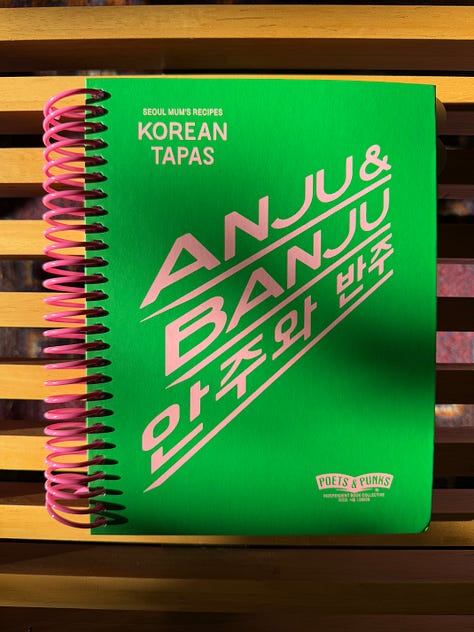
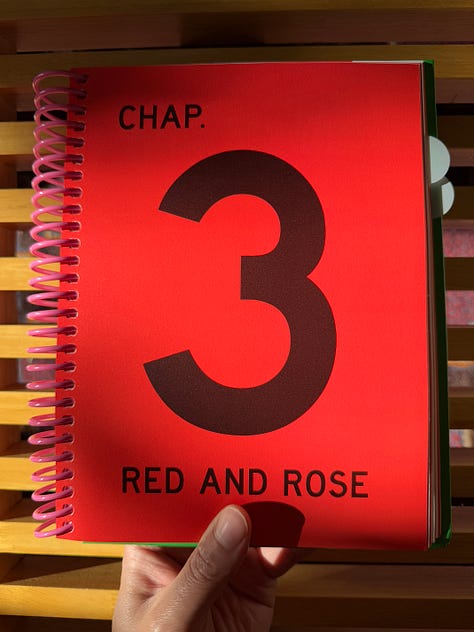
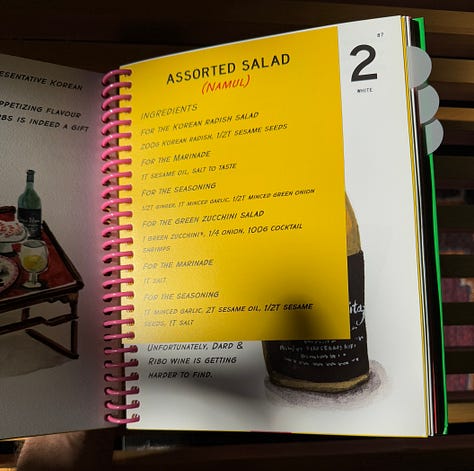
Anju & Banju
Why this book: A fourth gift2 — do my friends get me or what? The pairing of food and drink stood out as unique, and from a book design perspective, its uniquely striking and contemporary. I chose one recipe per drink category.
Baechujeon [napa cabbage pancake]
Sogogi Gamja Jorim [braised sirloin potatoes]
Jeyuk Bokkeum [stir fried pork]
Gireum Tteokbokki [oil stir fried rice cake]
Also considered
My Korea - this was much talked about when it first came out…. honestly, I reserve the right to still get this book, sequence of acquisition is the reason it’s left out
Koreatown - same authors as Koreaworld, wanted to diversify
Banchan - I thought it would be really fun to just focus just on banchan for a bit, but it’s such an essential part of the cuisine that its very well represented in literally in every book
Korean American Cooking Comics - Can you believe it, a fifth gift. I guess I have been talking about this interest in Korean cooking for longer than I realized. Super cute, I think the recipe tableaus are fun if not super descriptive - I’ll be cooking and/or taking ideas from this when I’m a bit more comfortable freestyling
I haven’t quite decided how I’m going to write about this journey; book-by-book? There is part of me that wants to try a traditional → modern → fusion breakdown? I’m not sure, perhaps it will become clearer to me as I keep cooking. Either way, something will be in your inbox soon enough.
Lastly, I feel the need to say explicitly: I am but a humble student of this storied and robust cuisine, please don’t confuse my enthusiasm with a deluded sense of authority. I’m just learning in public, my ongoing effort to become a cohesive person again 🫶🏾
R
I’ve stopped unplugging my rice cooker, the banchan are multiplying, the pantry is overflowing, the fridge is filled with pickles and ferments, I’ve had more meat than anyone would consider reasonable this month
For when I got my Green Card — it’s green 🥹





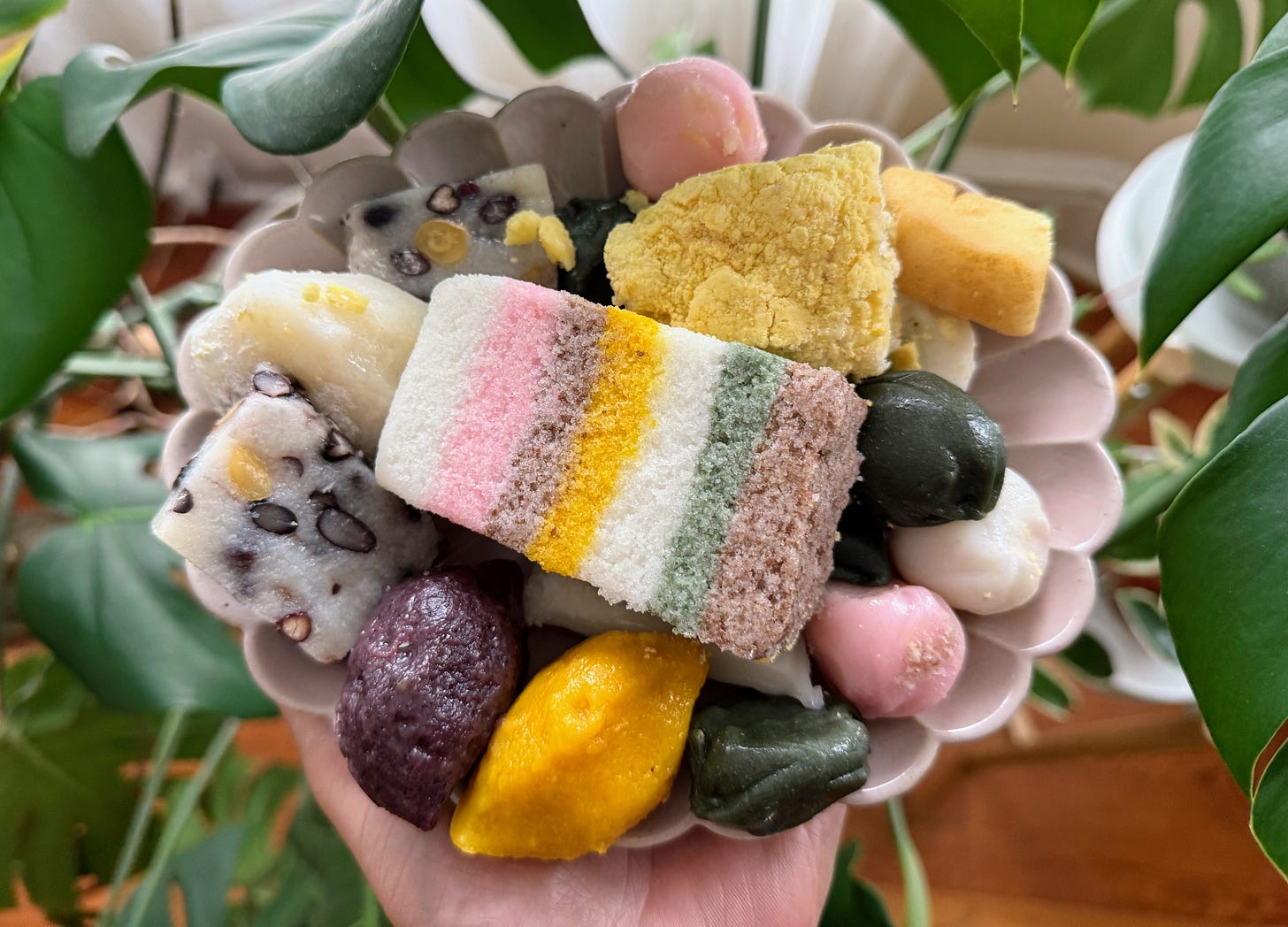
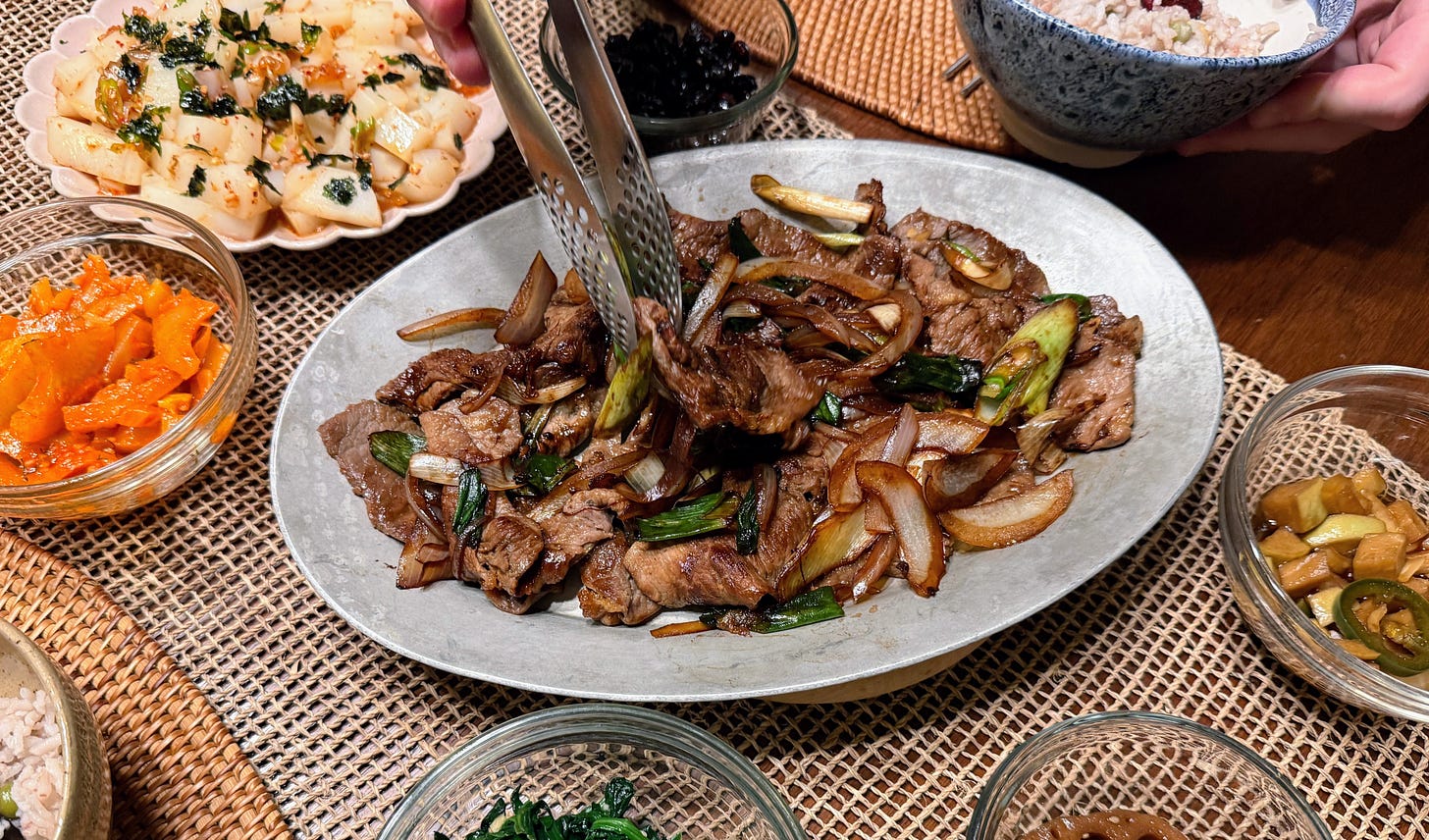

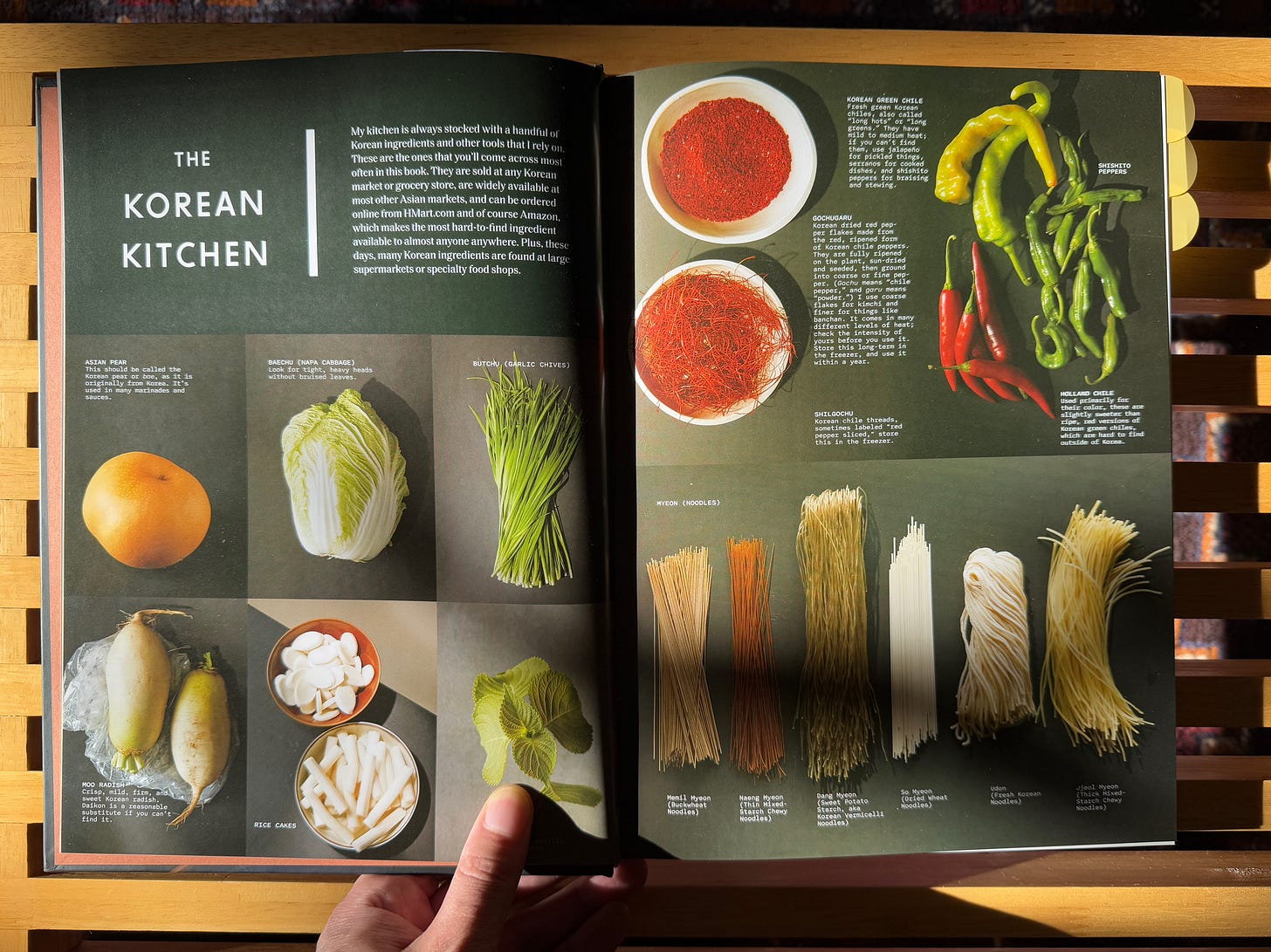
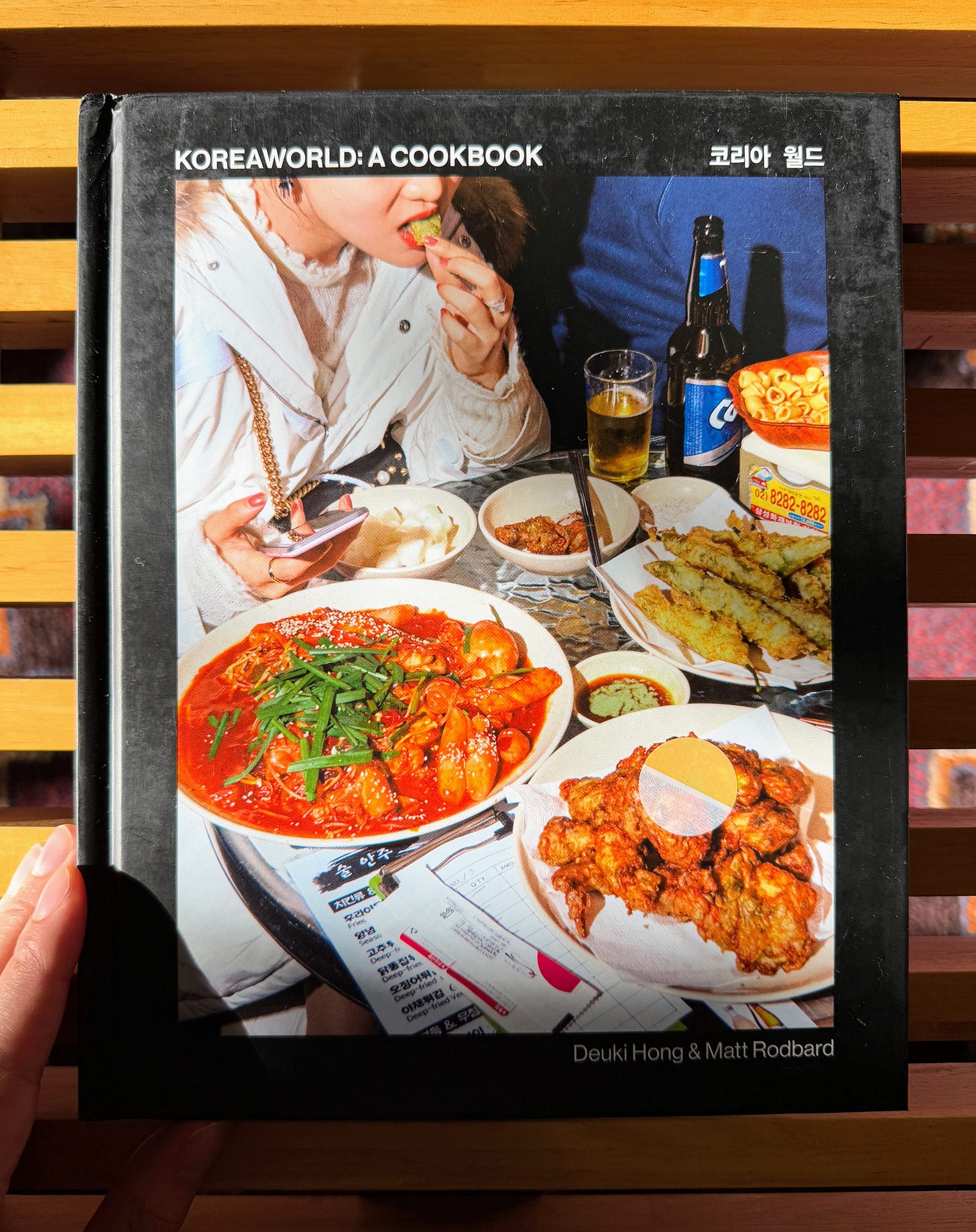
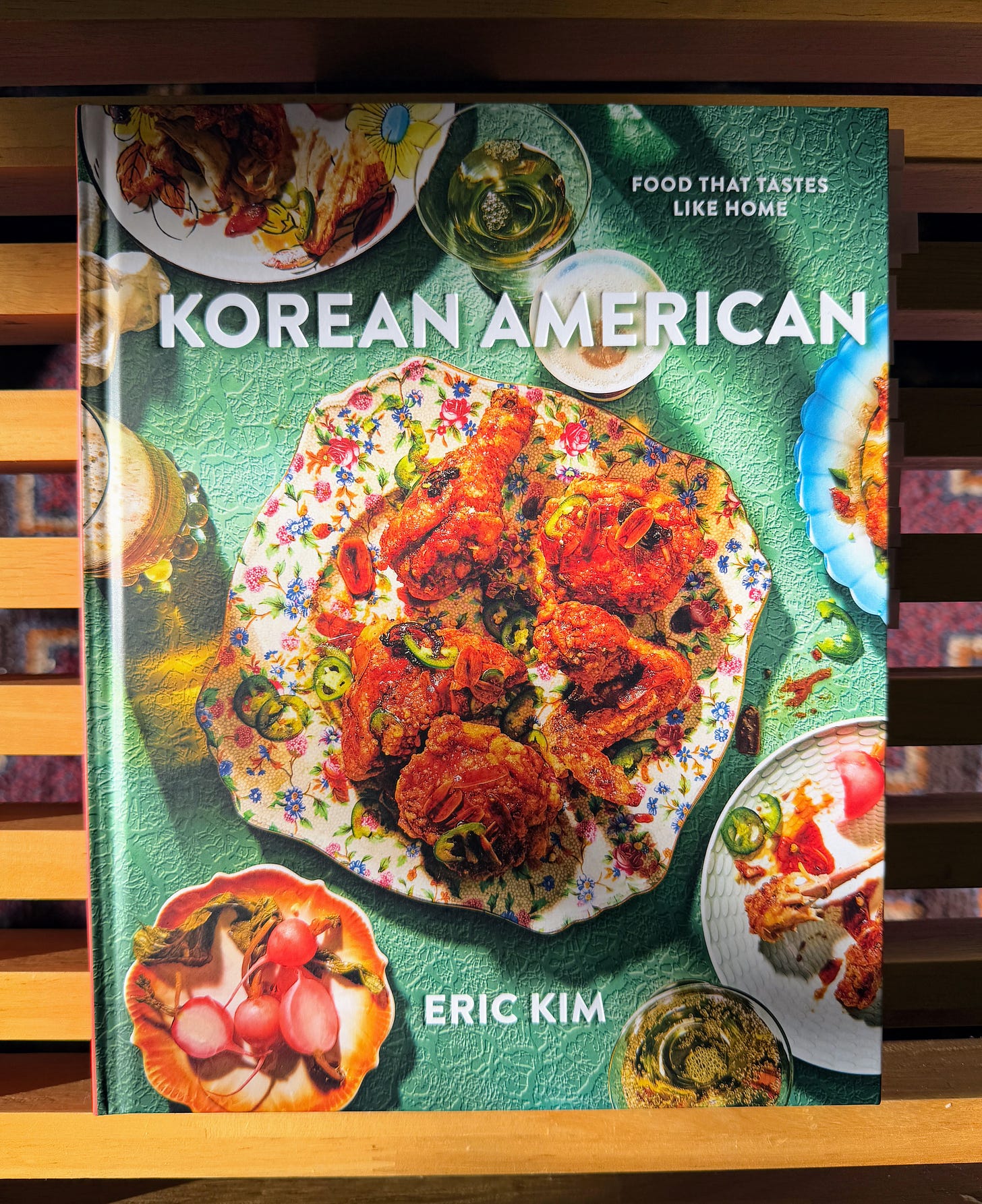

I'm fascinated to see a non-Korean taking this journey. Your food looks so tasty!